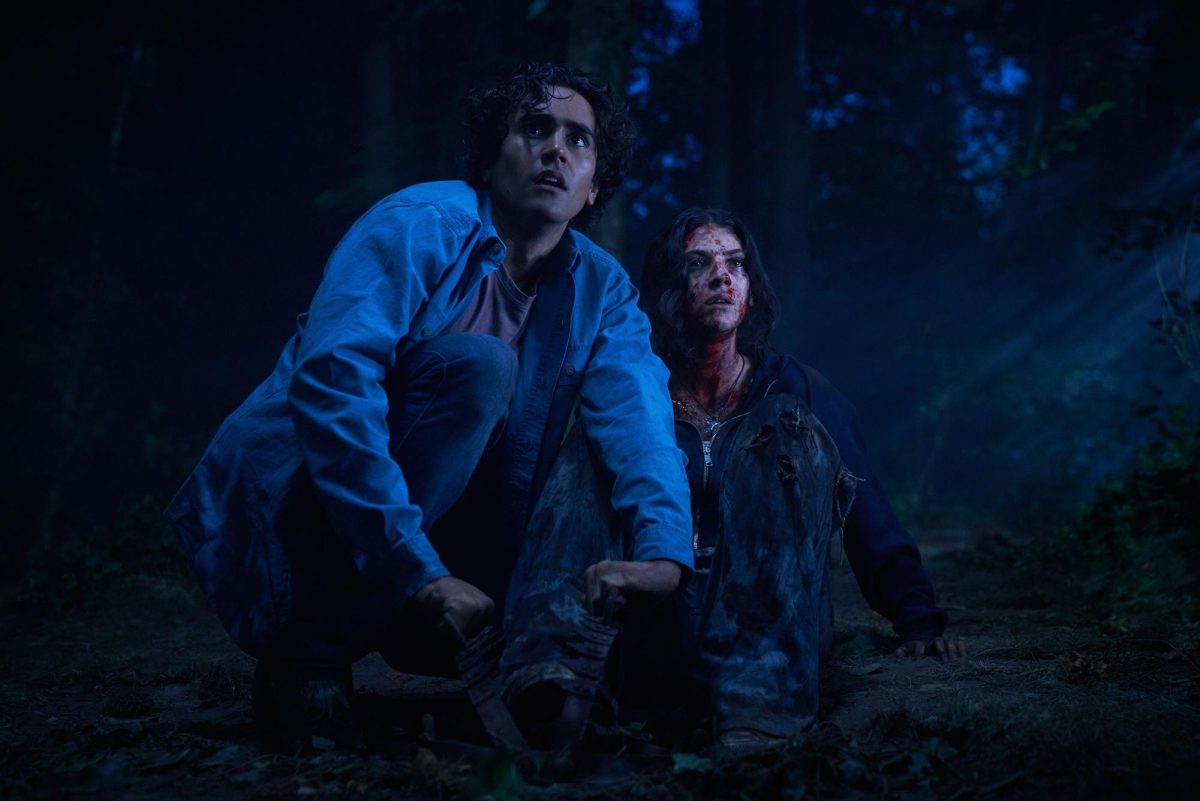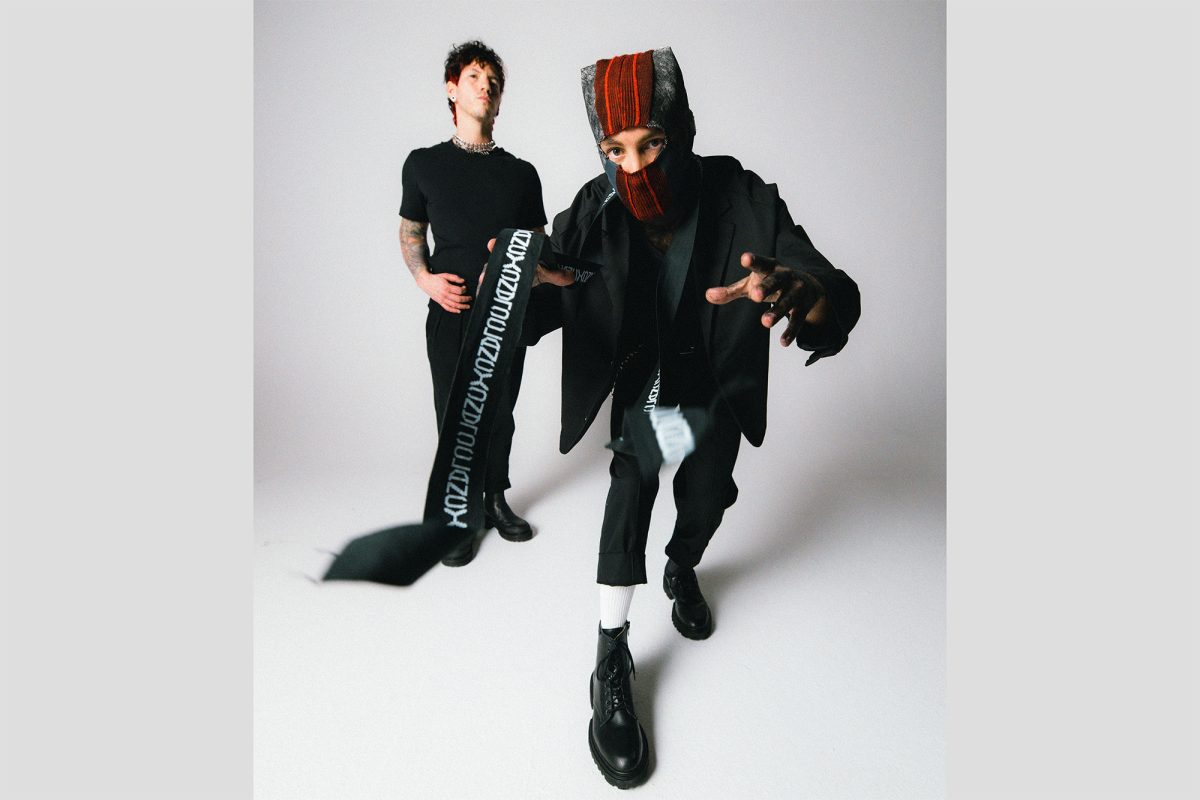4.5 out of 5.0 stars
One of the most awaited films of the year made its debut in theaters Nov. 22, with fans restlessly preparing to see the green-pink duo in “Wicked.” Ironically and a little tediously, the movie opens with a voiceover where Glinda addresses the Munchkins, and the audience, to address any rumors and speculations and “tell [them] the whole story.” It’s hard to measure the movie’s success and mass appeal without accounting for the existing fanbase.
The film picks up toward the end of “The Wizard of Oz” as Munchkinland celebrates the death of the Wicked Witch of the West. In the first song, “No One Mourns the Wicked,” audiences meet Glinda the Good played by Ariana Grande-Butera, and Elphaba Thropp played by Cynthia Erivo. For the remainder of the film, it flashes back to the witches’ formative years at Shiz University, where they question if the wicked are born or made. Ultimately the film leaves several plot points loose to address in part two, set to be released Nov. 21, 2025.
One of the most unrealistic qualities of this fantasyland is the fact that all of the supposedly early 20-year-old students at Shiz University are played by actors who are at least 25 and look their age. But, this is easy to forgive thanks to the compelling performances delivered by most of the actors.
This is especially true for 36-year-old Jonathan Bailey, who is perfect in the role of the Land of Oz’s dreamboat, the rebellious Prince of Winkie Country Fiyero Tigelaar. Bailey’s charm and talent make it easy to get lost in his charisma and pay little to no attention to anything else on screen. He perfectly captures the character and steals the spotlight in every scene he is in from his introduction in “Dancing Through Life.”
“Wicked” is carried by the powerhouse leads. While lacking diction during her songs, Grande reinvents Glinda while also paying homage to Kristin Chenoweth’s original rendition on Broadway, invoking the character’s same loveable sweetness in spite of her vanity. Grande’s Glinda is bubbly, popular and enchanting beyond the actress’ stardom. Grande makes the audience burst into giggles with ease yet also moves them, especially when bouncing off Erivo’s energy.
Erivo’s performance as Elphaba goes beyond what many would have expected, surpassing an already very high bar set by Idina Menzel, who played Elphaba in the original Broadway cast. She portrays a vulnerable woman who takes a roaring stand against a society that shoves her aside due to the color of her skin. Elphaba is strong, rigid but not heartless and fearless in bringing support to those who are suffering the most. Her singing is just as good as her acting, leaving audiences yearning to hear more in part two.
Beyond acting, the practical sets and locations in “Wicked” transport viewers into a magical land that feels real yet distant. Director Jon M. Chu — best known for his work in “Crazy Rich Asians” — brought the allure of the theater sets into the film, especially for musical numbers such as “Dancing Through Life” and “I’m Not That Girl” where the characters physically interact with the world around them but feel underused in songs like “The Wizard and I” where Elphaba wanders without direction. It lacks that dreamlike, technicolor iconic look that is so memorable of the original 1939 “The Wizard of Oz.”
Most surprising was Chu’s ability to retain the glamour of the Broadway show while enhancing it with cinematography. Every shot embraced the camera’s ability to showcase details one might miss when watching it on a stage. For example, during “Popular,” the cuts synced with the song’s tune, matching the track’s playful energy with fitting gestures.
The same cannot be said for the soundtrack. The soundtrack was produced by the original “Wicked” composer Stephen Schwartz, Greg Wells and Stephen Oremus. For the most part, songs were recorded while filming, but were adapted from their stage version to match Chu’s rendition of the world. In this process, the songs lost some of their theatrical appeal and leaned more mainstream. The passion behind every song is made clear by the performers, but one must watch “Wicked” with Dolby Stereo sound to get the best experience.
In the end, “Wicked” has lost some of its charm in attempting to become more palatable for a larger audience. While Chu and Schwartz’ proposed changes were mostly shut down, the film still sometimes feels harmed by Grande’s popularity: would the changes in Glinda’s songs be necessary if someone without such unique signature vocals was cast in the role?
It is hard to fully capture the magic of a live performance in a film, risking the wow factor of the story, but “Wicked” conquers this challenge. This film is undeniably full of nostalgia and brings the streets of Broadway into every movie theater while also holding onto its theatrical and musical origins. This must be taken into account when buying tickets for the film. Despite all of its greatness “Wicked” may not resonate with everyone, particularly those who prefer traditional film narratives over musical theater adaptations, and that is perfectly fine.






















